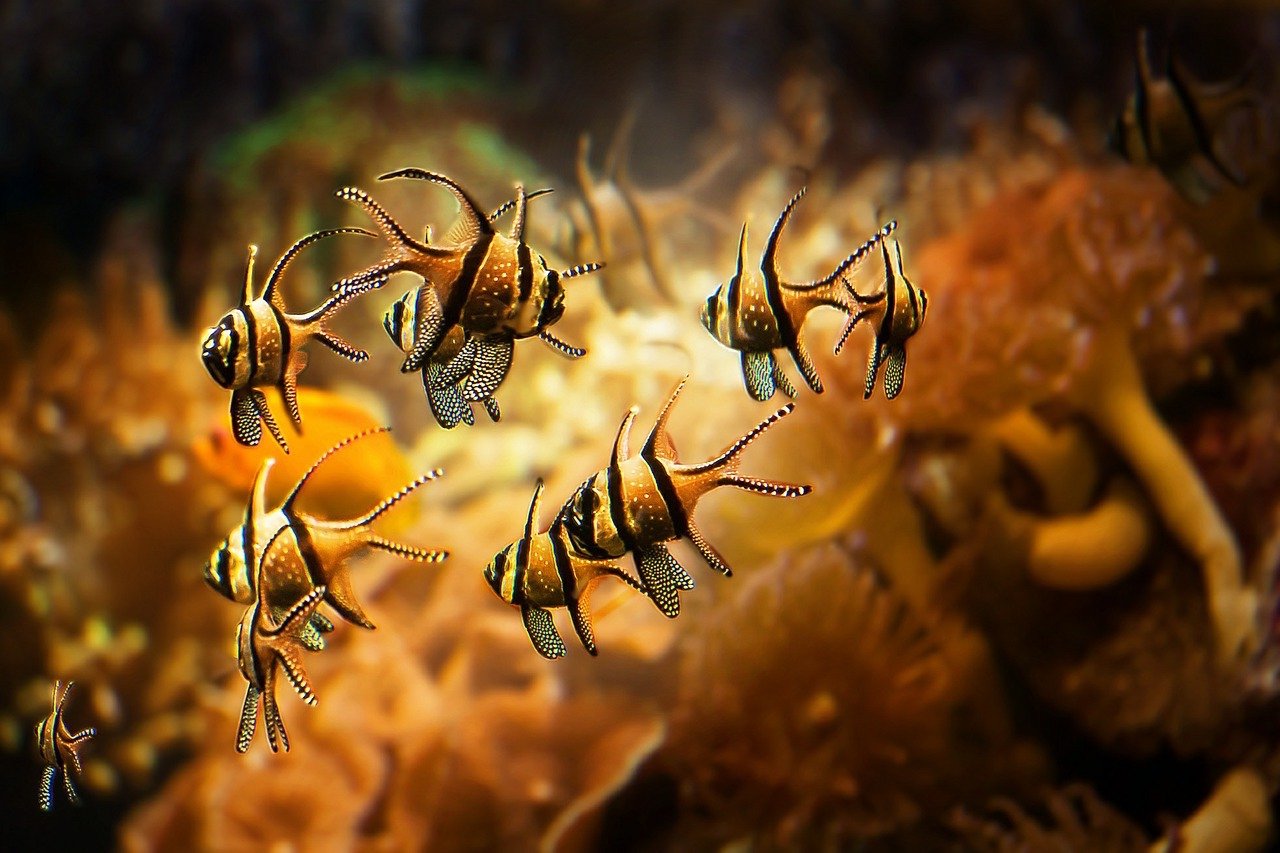Proper nutrition is the key to good health for years to come. It is difficult to imagine a well-designed weekly menu without fish. The benefits of fish were noted many centuries ago, for example, a tradition has come to us – one day a week it is obligatory to eat fish (the famous “fish day”).
What are the useful properties of fish?
The fish fillet is a source of easily digestible protein, microelements, vitamins, but the most valuable in fish is fat, which consists of polyunsaturated fatty acids (omega 3 and omega 6) and is fully absorbed by the body. Sea fish, in addition to being rich in iodine and bromine, saturates our body with phosphorus, potassium, magnesium, sodium, sulfur, fluorine, copper, iron, zinc, manganese. The vitamin range contained in sea fish fillets is significant, these are B vitamins (B1, B2, B6, B12), vitamin PP, H, as well as fat-soluble vitamins A and D.
So as we mention, fish and fish products, such as Tuna, are very for the human body. Fish meat has a high nutritional value, therefore fish dishes are widely used in the daily diet, in baby and diet food.
The usefulness of fish is primarily due to the content of complete protein. Fish meat proteins are easily absorbed by the human body. If the veal is digested in the human body in 5 hours, then fish in 2-3 hours. A valuable component of fish, especially ocean fish, is fat. The fat content of different fish species ranges from about 1 to 20 percent. Ocean fish oil is rich in vitamins A and D.
Fish contains many times more vitamin A than meat, so fish is an important natural source of this vitamin. Fish meat contains water-soluble vitamins: small amounts of vitamin C, as well as a complex of B vitamins: B1, B2, B6, B12, vitamins H and PP, as well as pantothenic acid. Fish contains many mineral elements necessary for the human body, among which phosphorus, calcium, potassium, sodium, magnesium, sulfur prevail. And also iron, copper, manganese, cobalt, zinc, molybdenum, iodine, bromine, fluorine, and other elements are important for the human body.
It should be noted that in the meat of freshwater fish, even those that were grown in aquariums, unlike sea fish, iodine and bromine are almost completely absent. Marine invertebrates and algae are also useful foods. Invertebrate meat contains essential amino acids and vitamins. Seaweed contains many mineral salts, especially trace elements (cobalt, molybdenum, iodine) and various vitamins. It is difficult to dispute the usefulness of fish in the human diet, so delicious recipes for cooking fish dishes should be in every home.

Recommendations for choosing fish and seafood
The trading network sells fish is a form of fresh-frozen, frozen, chilled, and live fish.
Fresh-frozen
This fish must meet several mandatory requirements:
- The color is silvery gray with pinkish or dark red gills.
- The carcass is whole and even (no torn off heads, tails, and bruises) and firm, but not “stone”, like frozen fish.
- Lack of any kind of ice glaze.
- The smell of fresh fish without a rancid, rotten smell.
Frozen fish
Is fish that has been chilled in frost from -8 ° C to -18 ° C. Peeled, crumpled, yellowish, and dark spots, out of shape or even “torn” fish is the best indicator that it has been repeatedly thawed and frozen again. The smell of old fat testifies to the same. The flesh of such fish exfoliates and crawls when defrosting.
Chilled fish
This means processed by cold with a temperature of about 0 to -2 ° C, that is, close to freezing, but still not frozen:
- The chilled fish carcass should be covered with a thin layer of transparent (not white) mucus and have a color characteristic of the fish variety.
- The scales should shine and hold very tightly.
- When pressing on the back, no fossa should remain – this shows that the flesh is fresh and elastic, but a fossa that does not disappear for a long time will show that the fish was frozen.
- The eyes of a good fish are round, protruding and transparent, and not sunken and not cloudy.
- The gills are pink or red (and in sturgeon fish, they are dark, with a reddish tint), but not faded or brown, white mucus on the gills is a bad sign.
- The smell of fresh fish is fresh and slightly sweet, but not too fishy or muddy (although some varieties of river fish can slightly “give off” with mud, and to eliminate this smell they are specially washed in cold salted water).
- The tail should be straight and not curved up or dry.
- The abdomen is flat, not swollen, and without any spots.
- If you put such a fish in water, it should drown, a stale fish floats up with its belly up.
- Fillet, ideally, should be very evenly sliced, seemingly translucent, and dense.
- It is better to put chilled fish immediately on the table – when frozen in a home freezer, it will lose half of its beneficial properties and taste.
Fresh fish
This can of fish is the easy one to recognize. You can know those by:
- Shiny, clean, slightly damp scales.
- The eyes of the fish should be light and transparent.
- Recently caught fish meat is dense, elastic, and quickly regains its shape.
- The smell of fresh fish is fresh and slightly sweet, but not too fishy or muddy.
- The smell is a very important criterion for freshness and seafood.
Remember, that fresh seafood is practically odorless.

Specific fish kinds to buy for consumption
When buying shrimp, pay attention to their appearance. In untreated tails, the tails should be curled into a ring. A straight shrimp is a sign of a bad shrimp, a shrimp that the product has been repeatedly frozen or has been frozen already stale. Stains and unnatural shades are also a sign of poor quality raw materials.
When choosing caviar, pay attention to the consistency of the mass of the eggs. It should be slightly crumbly, not vicious, or liquid. Fresh caviar – dry, not very shiny.
Pay attention to the information on the label or on the online store you buy it from. Buyers must be informed about products from aquatic biological resources (product name, manufacturer’s name and location, manufacturer’s trademark (if any), weight or volume, or quantity of the product, product composition, nutritional value, storage conditions, shelf life, date of manufacture and date of packaging, information on confirmation of the conformity of food products As for glaze: net weight (for frozen glazed fish food products – net weight of frozen fish food products without glaze); glaze weight percentage in percent.
Remember, that during storage, transportation, and sale of fish food products, defrosting of frozen fish food products is not allowed. Also, when choosing a place to buy fish, pay attention to the conditions for storing and selling fish products:
- Chilled fish food products should be stored at a temperature not higher than 5 ° C, but above the freezing point of tissue juice.
- Frozen fish food products should be stored at a temperature not exceeding minus 18 ° C.
- Frozen fish food products should be stored at temperatures from minus 3 ° C to minus 5 ° C.
- It is not allowed to store chilled, slightly frozen, and frozen fish food products in uncooled rooms before loading into a vehicle or container.
Transportation of a fish
Many of us buy fish that was stored in a container. Transport vehicles and containers intended for the transportation of fish food products are equipped with means that allow observing and registering the established temperature regime. Transportation of fish food products in bulk without the use of transport and consumer packaging is not allowed! Refrain from buying fish and seafood of unsightly appearance and questionable quality, without proper labeling and in the absence of the necessary information about the manufacturer.
You should not purchase these products in places of unauthorized trade: in spontaneous markets, along highways, in unsuitable premises, in the yard, from the trunk of cars, etc. Products sold in such places are potentially dangerous with the possibility of food poisoning and infectious diseases (including food toxic infections) that will require medical expertise. It is extremely risky to purchase dried, salted, smoked fish from random people. Take care of yourself and your loved ones. In this case, your health is in your hands.







Leave a Reply